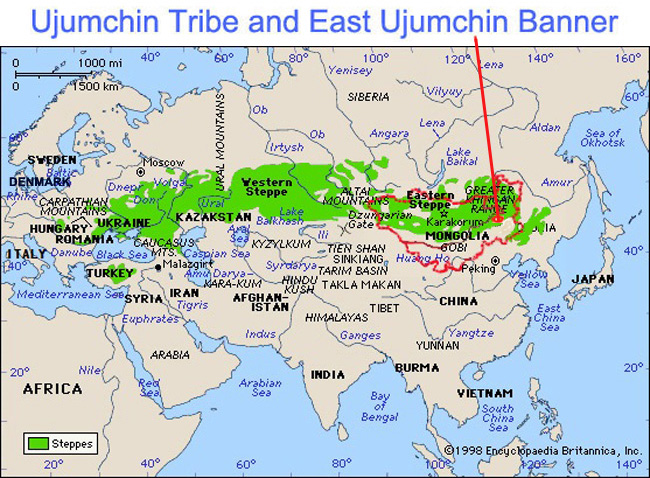Steppe(Specifically referring to the grassland belt from the Mongolian Plateau to Central Europe)
> chinese
Related > Definition of Wetlands, Deserts, Forests, Desertification
|
Steppe(Specifically referring to the grassland belt from the Mongolian Plateau to Central Europe) |
> chinese |
|
|
Related > Definition of Wetlands, Deserts, Forests, Desertification |
||
Home - Grassland Definition
﹛
﹛
|
﹛ What is a wetland? What is a forest? What is a desert?
﹛ |
|
|
﹛ Dongwuqi Healthy Grassland (larger in area than Denmark, Switzerland, and the Netherlands):
|
|
|
Healthy Grassland Dongwu Banner
- Harmonious Coexistence between Grassland Ecology and Indigenous
Herdsmen Culture.
There are still 699 native vascular plants in Mandu Baolige. ﹛ ﹛ |
|
|
| ﹛ |
 ﹛ ﹛ |
| ﹛
EurAsian
Steppe Steppe level, grassy treeless plain, esp in SE Europe and central Asia. Steppe It specifically refers to the treeless grassland belt from Central Europe to central Asia, named after the iconic colonial species Stipa (Latin for Stipa)
﹛ |
|
The nomadic and agricultural regions of Eurasia (click to see the location of China in the picture):
﹛ ﹛
The iconic plant of Steppe grassland in northern China - Stipa, and the
iconic animal -
Procapra gutturosa: ﹛ ﹛ ﹛ ﹛ ﹛ |
|
﹛ ﹛
Nomadc Herdsman of Steppe in Northern China - Dongwu Banner, Inner
Mongolia, 1990. Oil Painting by Chen Jiqun: ﹛ |
|
Location map of outflow rivers, inflow rivers, and 400mm precipitation lines in Chinaㄩ
|
|
Nature has arranged two types of ecosystems for our country: the cold and dry grassland area (with only three months of green plant growth period) and the forest area with abundant rainfall (including the evergreen green mountains in the south).
Over the past three thousand years, humans have developed two
civilizations in the two ecological zones mentioned above: the nomadic
civilization that does not compete with animals for grass and protects
plants, and the agricultural civilization that mainly eats plants and
plant seeds.
Two civilizations construct the history of our country, influencing
the reproduction and even survival of natural ecosystems and wild
animal and plant populations. Of course, the addition of artificial
insecticides and herbicides in the post industrial era, as well as
intensive fattening and feeding of animal meat and milk, has led to
the extinction of a wider range of native plant and animal habitats
and populations. ﹛ |
|
Conclusion: |
|
﹛ |
﹛
﹛
﹛
﹛
﹛